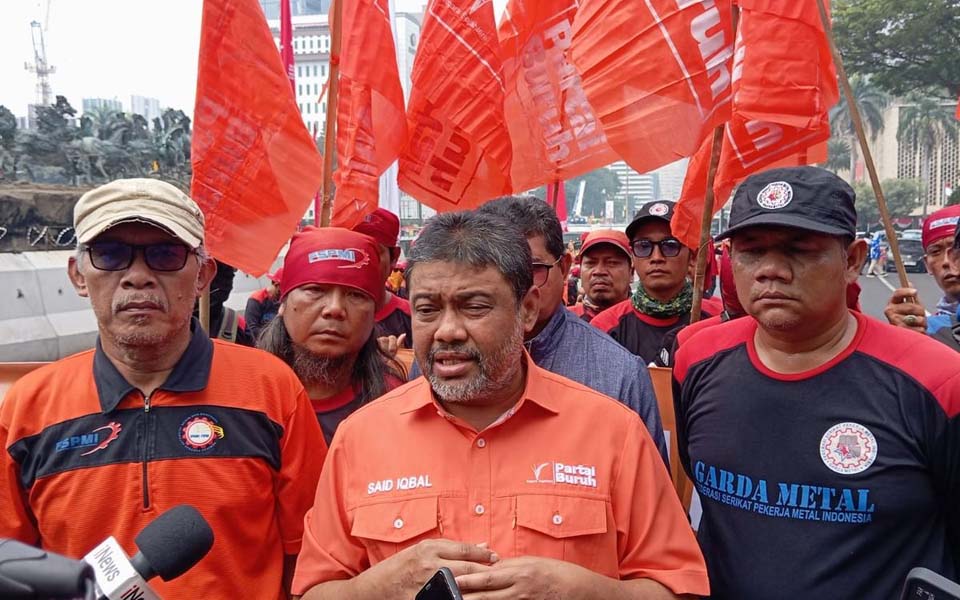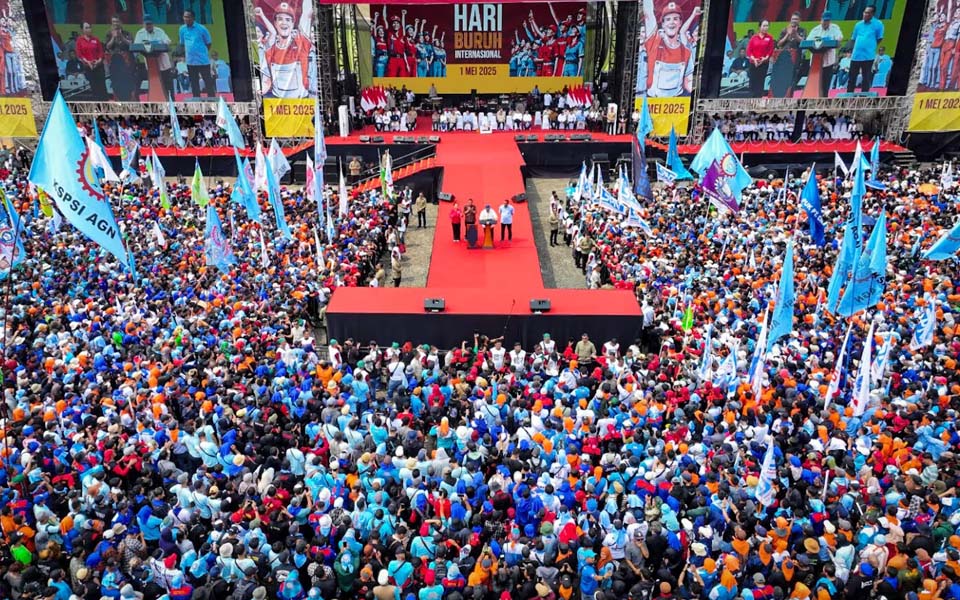Danu Damarjati, Jakarta – The Trade Union Coalition-Labour Party (KSP-PB) has rejected the government's claim that the poverty rate in Indonesia has fallen.
"The BPS's (National Statistics Agency) statement that said the poverty rate in Indonesia in June 2025 has declined compared with the previous year was bias, it does not reflect the reality in the field, and is more political [in nature]", the KSP-PB wrote in a press release on Tuesday July 29.
The KSP-PB consists of four trade unions confederations, 63 national trade union federations, nine people's organisations and Labour Party branches in 38 Provinces.
Said Iqbal, as the president of the Labour Party and the president of the Indonesian Trade Union Confederation (KSPI), said the BPS did not use the methodology for measuring poverty that is implemented by international institutions.
"BPS still serves up a methodology with the condition that the country of Indonesian is in a low-income country group, even though Indonesia is currently placed as an upper-middle-income country by international institutions", said the KSP-PB.
BPS still uses the poverty line of those who earn around US $2.5 PPP (Purchasing Power Parity) per day, so that the number of poor people in Indonesia is only 8.57 percent or around 24 million or so people.
Yet if you use the midpoint of poor people's income of US $5 PPP (around 756,000 rupiah per month), the poverty rate is around 68 million people.
"Moreover the World Bank reported the number of poor people in Indonesia as those having an income of around US $6.5 PPP per day (around 1.2 million rupiah per month), so the number of poor people in Indonesia is 68 percent or around 190 million people", said the KSP-PB.
The KSP-PB says that the BPS is in error and fails to explain the actual conditions facing workers, because many workers have been laid off (PHK) recently.
"KSP-PB Research and Development recorded that around 70 thousand workers were laid off in the January-April 2025 period. This means that with an increase in the number of layoffs, poverty will also increase, but strangely BPS announced that the poverty rate had declined", they said.
BPS declares poverty has fallen
The BPS says that Indonesia's poverty rate fell 8.47 percent to 23.85 million as of March 2025.
BPS noted that in March 2025 the average national poverty line was 609,160 rupiah per capita per month. That is, poor households with an average of 4.72 members have expenses of less than 2,875,235 rupiah per month.
BPS doesn't use World Bank as reference
The BPS's deputy for social statistics, Ateng Hartono, said that the BPS still uses the 2017 PPP to calculate the poverty rate because it follows the reference in the 2025-2029 National Medium-Term Development Plan (RPJMN).
Nevertheless, Hartono revealed that BPS has already adopted a new economic value adjustment measurement method (spatial deflators) that has already been perfected by the World Bank for the calculation of the 2017 PPP.
"We've adjusted the method, but our PPP is still fixed, because this is related to the 2025-2029 RPJMN, so that our evaluation of it is uninterrupted", he said as quoted from Kompas.com on Friday July 25.
Regarding the difference in the BPS and World Bank poverty rate, Hartono said that both actually use data on the Indonesian population from the National Socio-Economic Survey (Susenas).
The difference is, the poverty line reference used by BPS and the World Bank is not the same. The BPS uses the 2017 PPP while the World Bank uses the 2021 PPP.
The population that is categorised as poor according to the BPS is determined based on the basic needs approach (cost of basic needs), namely the minimum expenditure to meet basic needs, both food and non-food such as housing, education and transportation.
Meanwhile, the World Bank uses a poverty line based on the classification of a country's income. For upper middle-income countries such as Indonesia, the poverty line is set at 6.85 US dollars per capita per day in purchasing power parity, or around 41,000 rupiah per day. If multiplied by a month, the value reaches 1.23 million rupiah per person, far above the poverty line used by BPS.
[Translated by James Balowski. The original title of the article was "Partai Buruh dkk Tolak Klaim BPS soal Angka Kemiskinan Turun".]















